You’ve probably plugged in a smart outlet and wondered what sets it apart from those basic timer switches from decades past. The answer isn’t just about turning devices on and off remotely—it’s about creating intelligent, responsive automation that adapts to your lifestyle. True programmability means your outlets can make decisions, learn patterns, and integrate seamlessly with your entire smart home ecosystem, but there’s much more happening behind the scenes.
Understanding Scheduling Capabilities and Automation Features
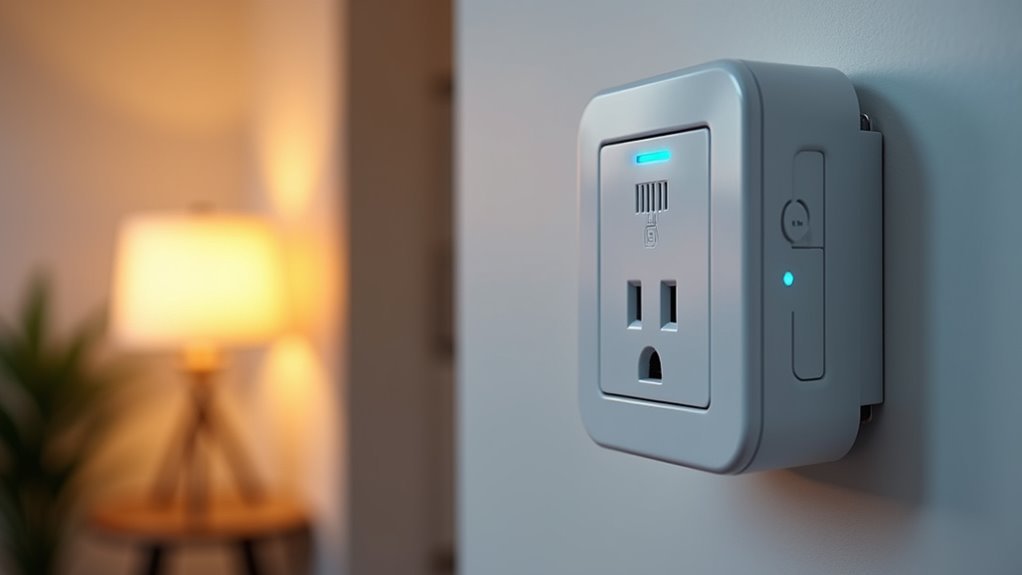
Although traditional outlets offer only basic on/off functionality, smart outlets transform your home’s electrical system into a sophisticated automation network.
These smart home devices offer extensive scheduling capabilities that let you program precise on/off times for connected appliances. Advanced automation features include home/away modes that adjust operations based on your presence, creating realistic occupancy patterns for enhanced security.
Smart plugs provide customized control through individual timers for multiple devices, all manageable from one app. You can integrate these outlets with broader smart home ecosystems, enabling complex scenarios triggered by environmental conditions or other connected devices.
Additionally, you’ll monitor energy consumption in real-time, allowing strategic adjustments to reduce usage during peak hours and optimize your home’s overall energy efficiency.
Energy Monitoring and Consumption Tracking Benefits
Beyond basic scheduling and automation, smart outlets excel at providing detailed insights into your energy consumption patterns.
Through advanced energy monitoring capabilities, these programmable devices track real-time power usage of connected appliances, revealing which devices consume the most electricity. You’ll receive thorough reports on historical energy use, enabling trend analysis and habit adjustments for improved energy efficiency.
Smart plugs send notifications when consumption tracking detects usage exceeding preset thresholds, promoting proactive energy management. You can schedule high-consumption devices during off-peak hours to capitalize on lower electricity rates.
Most importantly, programmable smart outlets eliminate phantom power consumption—which accounts for up to 25% of household electricity use—by ensuring complete device shutdown when not needed.
Voice Control Integration With Smart Home Ecosystems
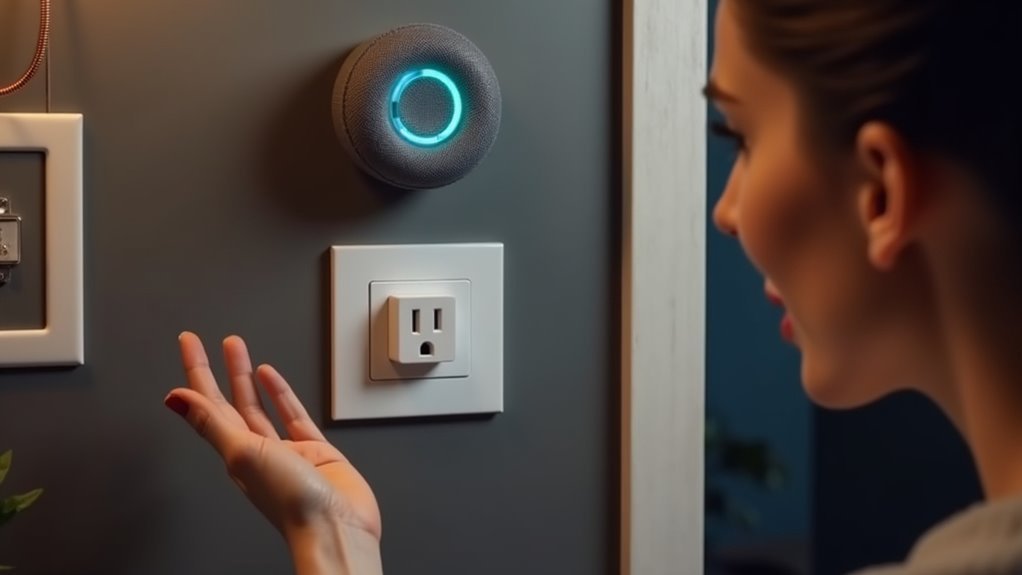
You’ll find that programmable smart outlets seamlessly connect with major voice assistants like Alexa, Google Assistant, and Apple HomeKit, transforming how you control your home devices.
These outlets integrate through various smart hub methods, creating a unified network that responds to your voice commands instantly.
The real power emerges when different platforms communicate across ecosystems, allowing your outlet to trigger complex routines that coordinate multiple smart devices throughout your home.
Major Voice Assistant Compatibility
Three major voice assistants dominate the smart outlet landscape: Amazon Alexa, Google Assistant, and Apple HomeKit. When you’re choosing smart plugs, you’ll want compatibility with these platforms for seamless integration into your existing smart home ecosystems.
This programmable functionality lets you establish hands-free control over any connected device through simple voice commands. You can create custom routines that optimize energy management, like scheduling your coffee maker to start brewing when you say “good morning.”
The integration allows sophisticated automation across multiple platforms, ensuring your smart plugs work regardless of which voice assistants you prefer. This compatibility transforms basic outlets into truly programmable hubs that respond to natural language commands, making your home more accessible and efficient.
Smart Hub Integration Methods
While voice control offers convenient hands-free operation, smart hub integration takes your programmable outlets to the next level by connecting them to extensive home automation systems.
Smart hub integration allows your smart plugs to communicate through protocols like Zigbee and Z-Wave, creating seamless connectivity beyond basic voice commands from Amazon Alexa or Google Assistant.
You’ll access advanced features like monitoring energy usage, setting detailed schedules, and receiving device alerts through unified smart home apps.
Custom automation becomes possible with IFTTT compatibility, letting you create sophisticated routines that trigger multiple actions simultaneously.
Whether you’re leaving home or following daily patterns, integrated smart plugs respond intelligently to your lifestyle, transforming simple outlets into powerful automation tools.
Cross-Platform Ecosystem Communication
Cross-platform ecosystem communication breaks down the barriers between different smart home brands, enabling your programmable outlets to respond seamlessly to voice commands across Amazon Alexa, Google Assistant, and Apple HomeKit. This integration transforms how you control your devices, allowing simple voice commands to turn appliances on or off, set schedules, and activate complex routines.
| Platform | Voice Command | Emotional Impact |
|---|---|---|
| Amazon Alexa | “Turn off bedroom lamp” | Pure convenience at bedtime |
| Google Assistant | “Start morning routine” | Energizing daily motivation |
| Apple HomeKit | “Goodnight” | Peaceful security feeling |
Smart outlets supporting protocols like Matter guarantee your programmable devices work together regardless of manufacturer. You’ll experience advanced home automation scenarios where voice control triggers multi-device sequences, creating a truly connected smart home ecosystem that responds intuitively to your lifestyle needs.
App-Based Remote Control and Management Options
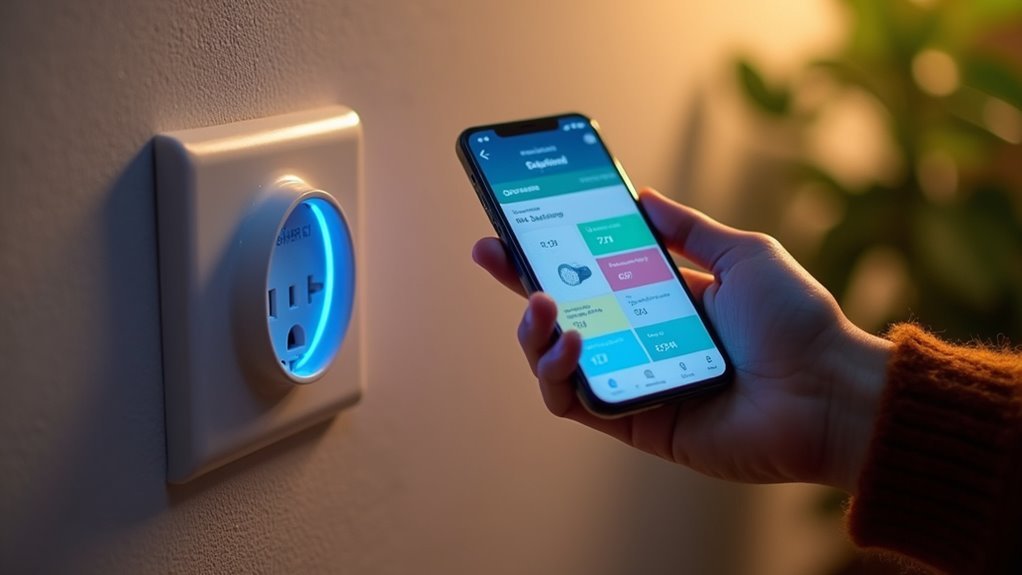
Once you’ve installed a programmable smart outlet, you’ll gain complete control over your connected devices through dedicated smartphone apps that work from anywhere with an internet connection.
App-based remote control transforms device management by letting you turn appliances on or off instantly, regardless of your location.
These smartphone apps offer powerful scheduling options, allowing you to automate devices for enhanced energy efficiency.
You’ll access real-time energy monitoring capabilities that track consumption patterns and historical usage data.
Integration with voice assistants like Alexa and Google Assistant enables hands-free operation through simple voice commands.
The apps feature customizable settings where you’ll create personalized routines that manage multiple devices simultaneously.
These automated sequences trigger based on specific schedules or conditions, streamlining your daily life while optimizing energy consumption across all connected appliances.
Matter Compatibility and Cross-Platform Device Communication
As smart home ecosystems continue expanding, Matter compatibility represents a revolutionary shift in how programmable smart outlets communicate across different platforms.
This unified standard enables seamless cross-platform communication between your smart outlets and devices across Apple HomeKit, Google Assistant, and Amazon Alexa ecosystems.
You’ll no longer need additional bridges or hubs to integrate different brands into your smart home systems.
Matter’s device interoperability allows you to create complex automation routines involving multiple manufacturers’ products, dramatically enhancing your outlets’ programmability.
This breakthrough smart technology simplifies user experiences by eliminating brand fragmentation.
You can now program sophisticated scenarios where your smart outlets work cohesively with any Matter-compatible device, regardless of manufacturer.
Major companies are rapidly adopting this standard, promising a more unified smart home environment.
Advanced Triggering Systems and Conditional Programming
Building on Matter’s unified communication foundation, programmable smart outlets now offer sophisticated triggering systems that respond to multiple environmental and behavioral conditions.
These advanced triggering systems enable conditional programming that transforms basic smart plugs into intelligent automation hubs.
Your outlets can now execute complex automation scenarios through:
- Environmental triggers – Temperature changes, occupancy sensors detecting room presence, and weather app notifications via IFTTT integration
- Location-based activation – Geofencing features that respond to your user location, automatically controlling devices when you’re arriving or leaving home
- Time-based routines – Scheduling features that create nightly security protocols, turning off all connected appliances at designated times
This conditional programming enhances energy efficiency while providing seamless smart home integration that adapts to your lifestyle patterns.
Frequently Asked Questions
What Should You Not Plug Into a Smart Plug?
You shouldn’t plug high-wattage appliances, motor-driven devices, medical equipment, mechanically-switched items, or other power strips into smart plugs. These can cause overheating, damage from inrush current, safety risks, or functionality issues.
What Are the Disadvantages of Smart Plugs?
Smart plugs can fail you when Wi-Fi’s unstable, creating connectivity issues. You’ll face privacy concerns from data collection, app dependency problems, and compatibility limitations with older mechanical-switch appliances, reducing their overall reliability.
What Is the Difference Between a Smart Plug and a Smart Socket?
You’ll find smart plugs are portable devices that plug into existing outlets, while smart sockets are permanently installed wall replacements. Smart plugs offer flexibility, but smart sockets provide cleaner integration.
How Do You Reprogram a Smart Plug?
You’ll reprogram your smart plug through its mobile app by modifying schedules, setting on/off times, or adjusting modes. If it’s unresponsive, reset it first, then reconfigure settings through the app.

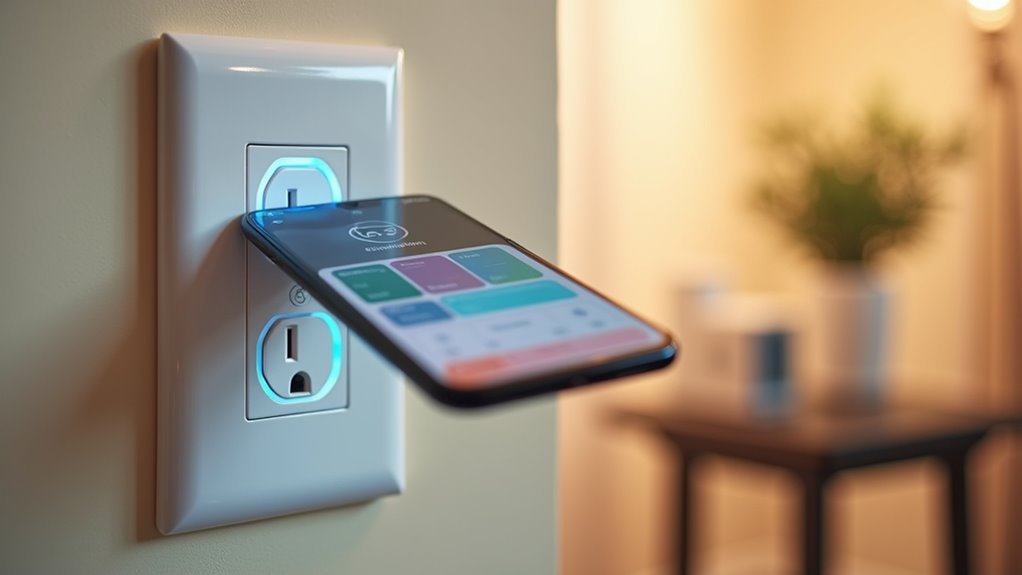
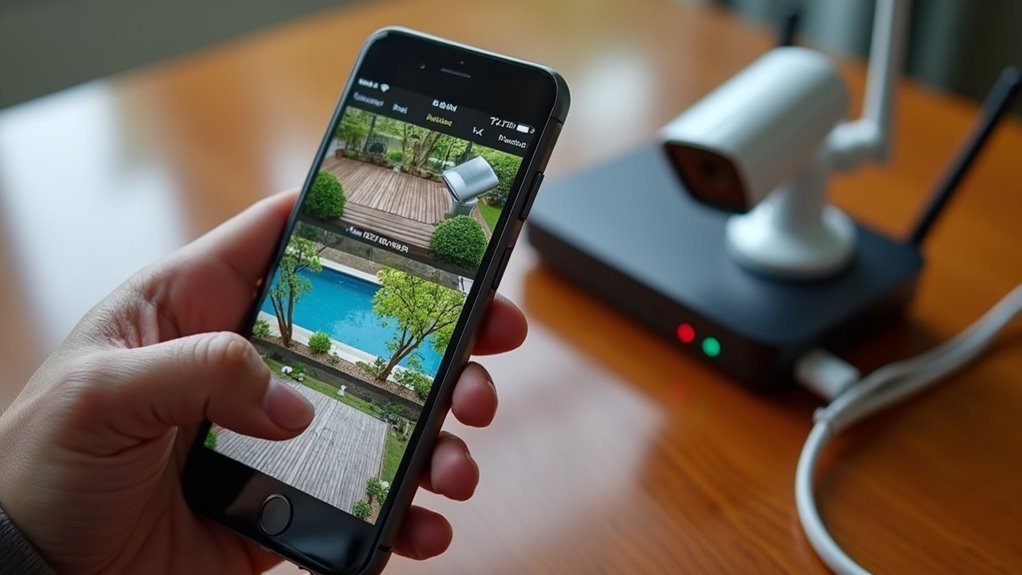
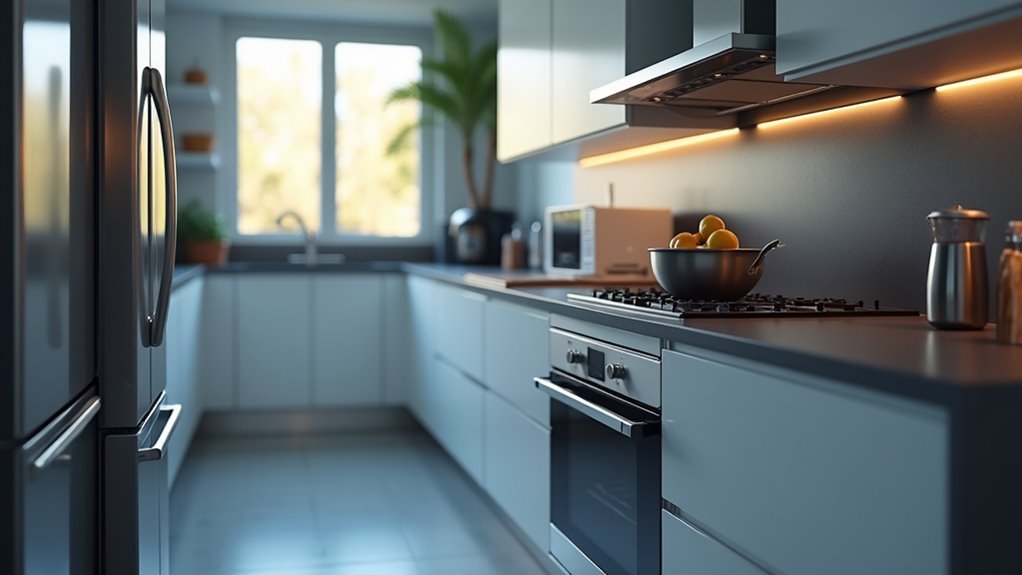
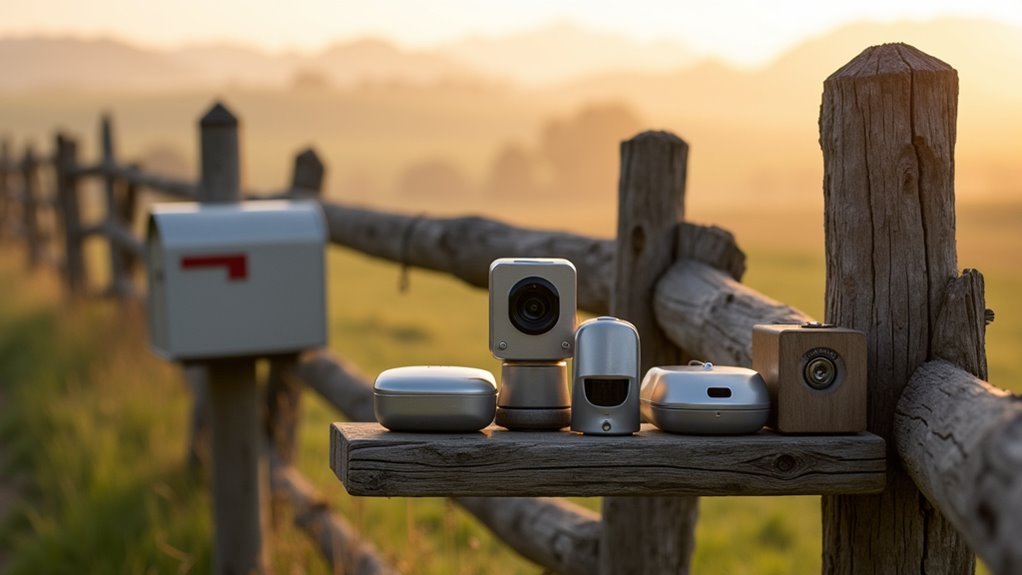
Leave a Reply